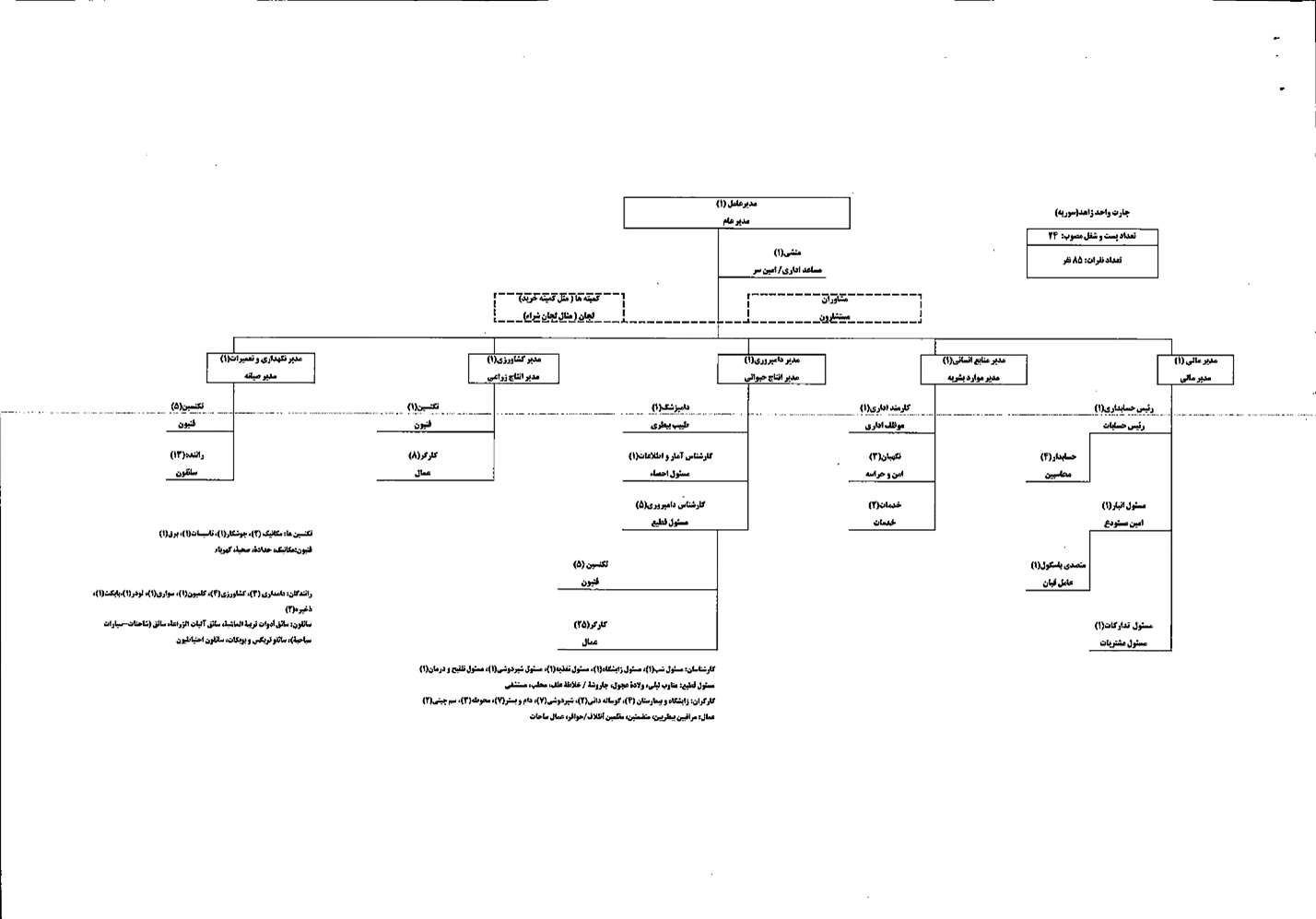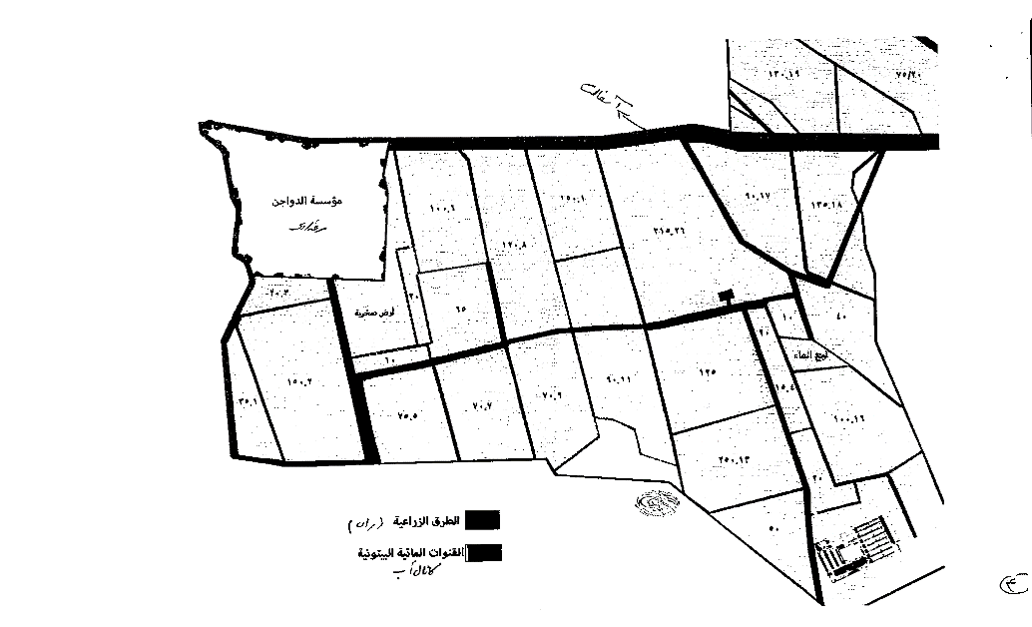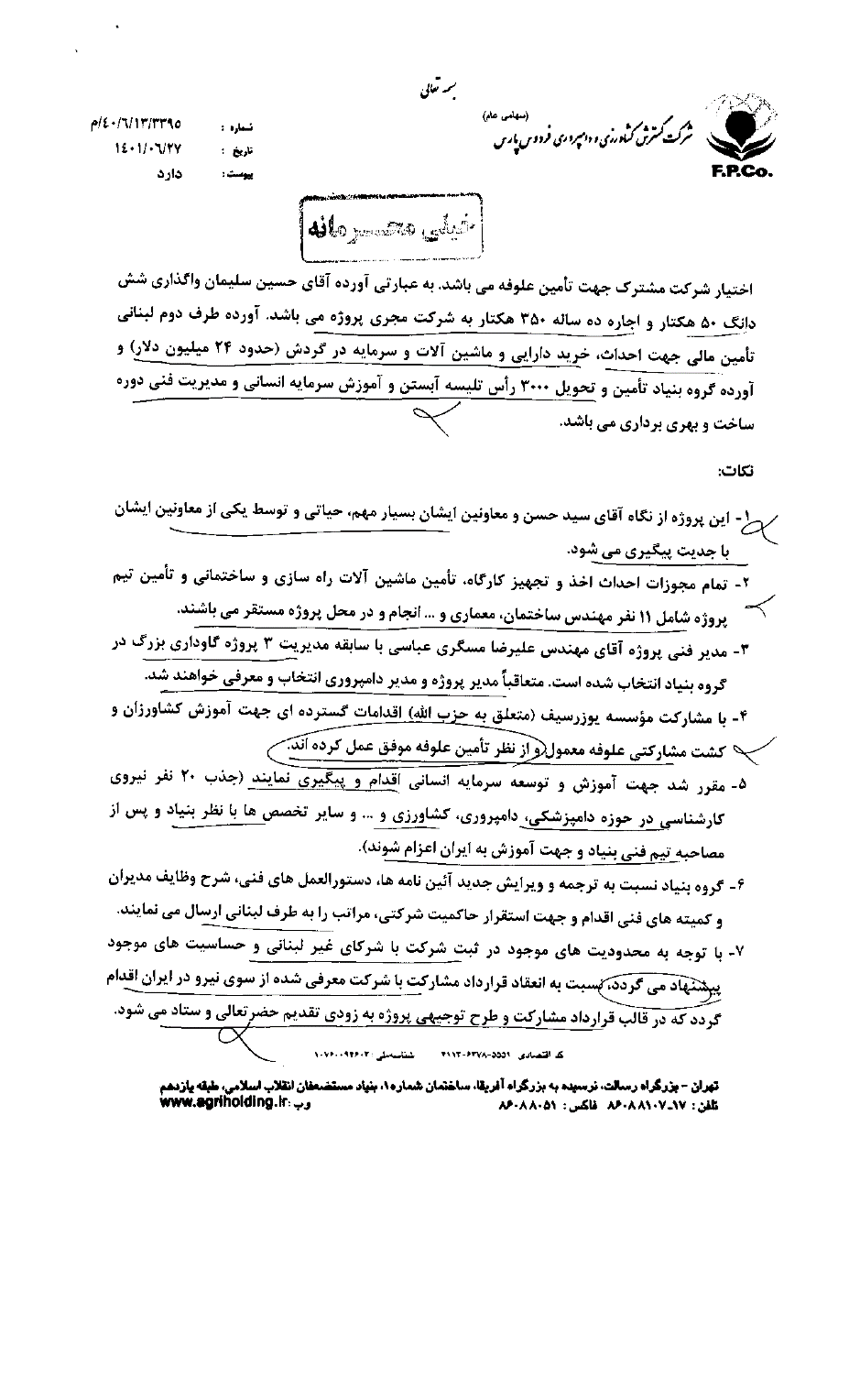
According to U.S. Department of Treasury, the Mostazafan Foundation is a vast conglomerate of holding companies operating in most of Iran's largest sectors. The Foundation's capital is based on the disbanded Pahlavi Foundation and confiscation of assets previously owned by opposition to the Islamic Republic. Formally, the foundation answers solely to Iran's supreme leader, Khamenei, and aims to aid the needy. However, it is used by high-ranking Islamic Republic officials and those closest to the leadership to enrich themselves through entrenched corruption.
As evident in its internal documents, Bonyad e Mostazafan ("Foundation of the Oppressed") has attempted to penetrate the Syrian market in recent years, leveraging the Mullahs' patronage over the notorious, recently fallen Assad Regime. The foundation has even established a dedicated branch for its activities in Syria. Understandably, Iran and the Mostazafan Foundation viewed Syria as a brand-new market, ripe for takeover by Islamic Republic’s takeover. The Bonyad identified what it saw as the most viable opportunities in Syria: Energy (carried out by Behran Oil), (re)construction as part of "post-war Syria", medicine, food, finance and insurance.

A formal letter signed by the Mostazafan Foundation explains some of its main activities in Syria as of Persian year 1401 (2022-2023), including a Tartus-based cattle farm joint venture with Quds Force, Behran Oil's Syria branch, and Bank Sina’s financing projects in Syria
Several enterprises are worth mentioning:
Behran Oil Company
Behran Oil Company: A distributed and exporter of petroleum and its products. The company registered a front company, “Enerzhy Gostar Sina Holdings", in a “free trade zone” in Imam Khomeini Airport City, to avoid exposing Behran Oil’s connection to the Assad regime and potential sanctions under the Syrian “Caesar Act”. The front, in turn, registered its own subsidiary in Syria named “Ravian Ruankar Laziut". Bahran Oil planned to sell a range of products in Syria, including industrial oils and transmitters, and to cooperate with Syrian industrial companies in the fields of automobiles and assembly lines.

 A PowerPoint presentation made by the Mostazafan Foundation, under the name of its front company "Enerzhy Gostar Sina Holdings". The presentation details key economic developments in the foundation's business in Assad-controlled Syria. The presentation also mentions its subsidiary in Syria, “Ravian Ruankar Laziut”
A PowerPoint presentation made by the Mostazafan Foundation, under the name of its front company "Enerzhy Gostar Sina Holdings". The presentation details key economic developments in the foundation's business in Assad-controlled Syria. The presentation also mentions its subsidiary in Syria, “Ravian Ruankar Laziut”

 Foundation documents detailing some of Behran Oil's business in Assad-controlled Syria.
Bank Sina and its Subsidiary, Sina Exchange, saw a strategic investment opportunity in Syria – to develop simple, fast, and easy-to-use financial channels between Iran and Syria, back when it was still controlled by the Assad regime. Plans included opening a branch in Damascus, that would facilitate trade between the countries and provide necessary banking services to the foundation's subsidiaries in Syria. Like other payment routes operated by Iranian exchange houses, this too was planned to rely on front companies and associates in Turkey and the UAE.
Foundation documents detailing some of Behran Oil's business in Assad-controlled Syria.
Bank Sina and its Subsidiary, Sina Exchange, saw a strategic investment opportunity in Syria – to develop simple, fast, and easy-to-use financial channels between Iran and Syria, back when it was still controlled by the Assad regime. Plans included opening a branch in Damascus, that would facilitate trade between the countries and provide necessary banking services to the foundation's subsidiaries in Syria. Like other payment routes operated by Iranian exchange houses, this too was planned to rely on front companies and associates in Turkey and the UAE.



Tartus-based cattle farm joint venture with the Quds Force
Islamic Republic Revolutionary Guards Corps, and Specifically the Quds Force, are infamous for promoting terrorism and destabilizing activities outside Iran, particularly in Yemen, Bahrain, Iraq, Syria and Lebanon. However, their business cooperation with the Mostazafan Foundation for cattle farming enterprises is surprising. It appears that together, the IRGC-QF and the Mostazafan Foundation have established cattle raising farm, the "Zahed Farm", in the Tartus district in Syria, and a dairy farm in Lattakia, likely owning several thousand cattle heads.
These enterprises are formally owned by "Ferdus Pars Agriculture and Cattle Raising Holdings", a Foundation subsidiary in Syria and "Al Afak", which is probably a company used by Quds Force to conduct business in Syria.
It remains unclear how the notorious Quds Force reached a point where they engage in cattle farming instead of promoting terrorism. Is it possible that such unrelated occupations ultimately led to their downfall in Syria?
 A formal letter Signed by Quds Force Commander, Esmail Gha'ani, to the Mostazafan Foundation, outlining the strategic importance of Iranian food-producing enterprises in the "Axis of Resistance" countries.
A formal letter Signed by Quds Force Commander, Esmail Gha'ani, to the Mostazafan Foundation, outlining the strategic importance of Iranian food-producing enterprises in the "Axis of Resistance" countries.


formal letters of the Mostazafan Foundation and its subsidiary "Ferdus Pars Holding" detailing the cattle farming joint venture with IRGC-QF.


An Employee list of Quds Force-affiliated cattle farming company “Al Afak” and an organizational chart of their “Zahed Farm” operation.*
 A map of the Tartus-Based “Zahed Farm”.
Similar development projects are underway in Lebanon, where Quds Force affiliated “Al Afak” company, Iranian proxy Lebanese Hizballah-owned company “Youzrasif Institute” and the Mostazafan Foundation’s “Ferdus Pars Agriculture” are working together to establish a 3,000 cattle head farm in the Ba’albek region.
A map of the Tartus-Based “Zahed Farm”.
Similar development projects are underway in Lebanon, where Quds Force affiliated “Al Afak” company, Iranian proxy Lebanese Hizballah-owned company “Youzrasif Institute” and the Mostazafan Foundation’s “Ferdus Pars Agriculture” are working together to establish a 3,000 cattle head farm in the Ba’albek region.
 A document written by Mostazafan Foundation’s “Ferdus Pars Agriculture” sets forth the basic plan for the joint venture cattle farm in the Ba’albek region in Lebanon with Quds Force-affiliated “Al Afak” and Lebanese Hizballah-owned “Youzrasif Institute”
A document written by Mostazafan Foundation’s “Ferdus Pars Agriculture” sets forth the basic plan for the joint venture cattle farm in the Ba’albek region in Lebanon with Quds Force-affiliated “Al Afak” and Lebanese Hizballah-owned “Youzrasif Institute”
All the documents used for this article were sourced from a bulk leakage of Mostazafan Foundation documents exposed on the Bakhtak Telegram channel, available at: https://t.me/bakhtak_1401 .